Discover how a bimodal integration strategy can address the major data management challenges facing your organization today.
Get the Report →Create JotForm Dashboards in Bold BI
Use CData Connect Server to create a virtual SQL Server Database for JotForm data to build custom dashboards in Bold BI.
Bold BI allows you to create, share, and collaborate on interactive BI dashboards. When paired with CData Connect Server, you get instant access to JotForm data for visualizations, dashboards, and more. This article shows how to create a virtual database for JotForm and build reports from JotForm data in Bold BI.
CData Connect Server provides a pure SQL Server interface for JotForm, allowing you to easily build reports from live JotForm data in Bold BI — without replicating the data to a natively supported database. As you build visualizations, Bold BI generates SQL queries to gather data. Using optimized data processing out of the box, CData Connect Server pushes all supported SQL operations (filters, JOINs, etc) directly to JotForm, leveraging server-side processing to quickly return the requested JotForm data.
Create a Virtual SQL Server Database for JotForm Data
CData Connect Server uses a straightforward, point-and-click interface to connect to data sources and generate APIs.
- Login to Connect Server and click Connections.
![Adding a connection]()
- Select "JotForm" from Available Data Sources.
-
Enter the necessary authentication properties to connect to JotForm.
Start by setting the Profile connection property to the location of the JotForm Profile on disk (e.g. C:\profiles\JotForm.apip). Next, set the ProfileSettings connection property to the connection string for JotForm (see below).
JotForm API Profile Settings
You will need to find your JotForm API Key in order to authenticate. To obtain an API Key, go to 'My Account' > 'API Section' > 'Create a New API Key'. Once you've created your new API Key, you can set it in the ProfileSettings connection property.
Custom Enterprise API Domains
Enterprise customers of JotForm are given custom API domains to connect to, rather than the default 'api.jotform.com' domain. If you are an enterprise JotForm customer, then set Domain to you custom API hostname, such as 'your-domain.com' or 'subdomain.jotform.com', inside the ProfileSettings connection property. Conversely, if you do not have a custom domain and still need to connect to 'api.jotform.com', then leave Domain undefined and set only APIKey.
![Configuring a connection (SQL Server is shown).]()
- Click Save Changes
- Click Privileges -> Add and add the new user (or an existing user) with the appropriate permissions.
With the virtual database created, you are ready to connect to JotForm data from Bold BI.
Visualize Live JotForm Data in Bold BI
The steps below outline connecting to CData Connect Server from Bold BI to create a new JotForm data source and build a simple visualization from the data.
- Log into your Bold BI instance, click the data sources tab, create a new data source, and choose the SQL Server connector.
- Choose the basic configuration and set the connection properties:
- Name: Name your connection
- Server name: Your Connect Server instance (CONNECT_SERVER_URL)
- Port: 1433
- Username: Your Connect Server username
- Password: Your Connect Server password
- Mode: Choose Live to query JotForm on-demand or choose Extract to load the data into Bold BI
- Database: Choose the database you created from the drop-down menu (jotformdb)
- Click Connect
- Select the table to visualize and drag it onto the workspace.
- Select a visualization style and add it to the report.
- Click the gear icon for the visualization to configure the visualization properties and assign columns to the visualization.
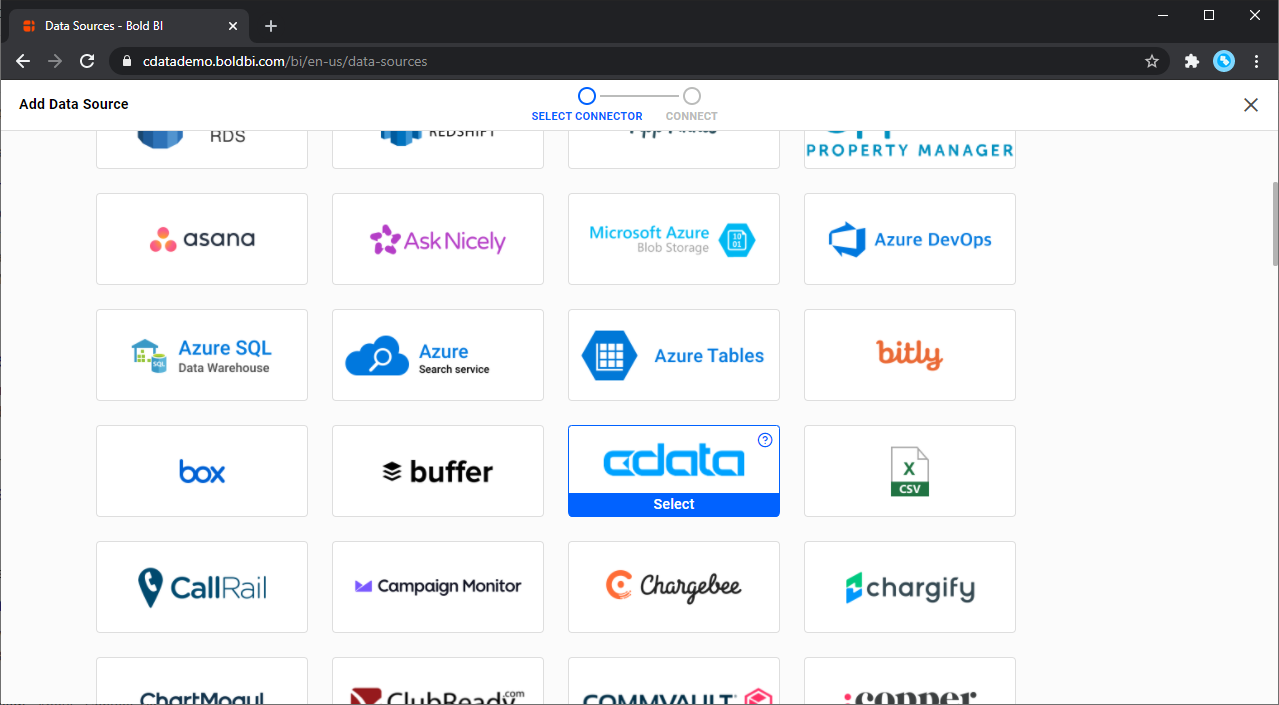
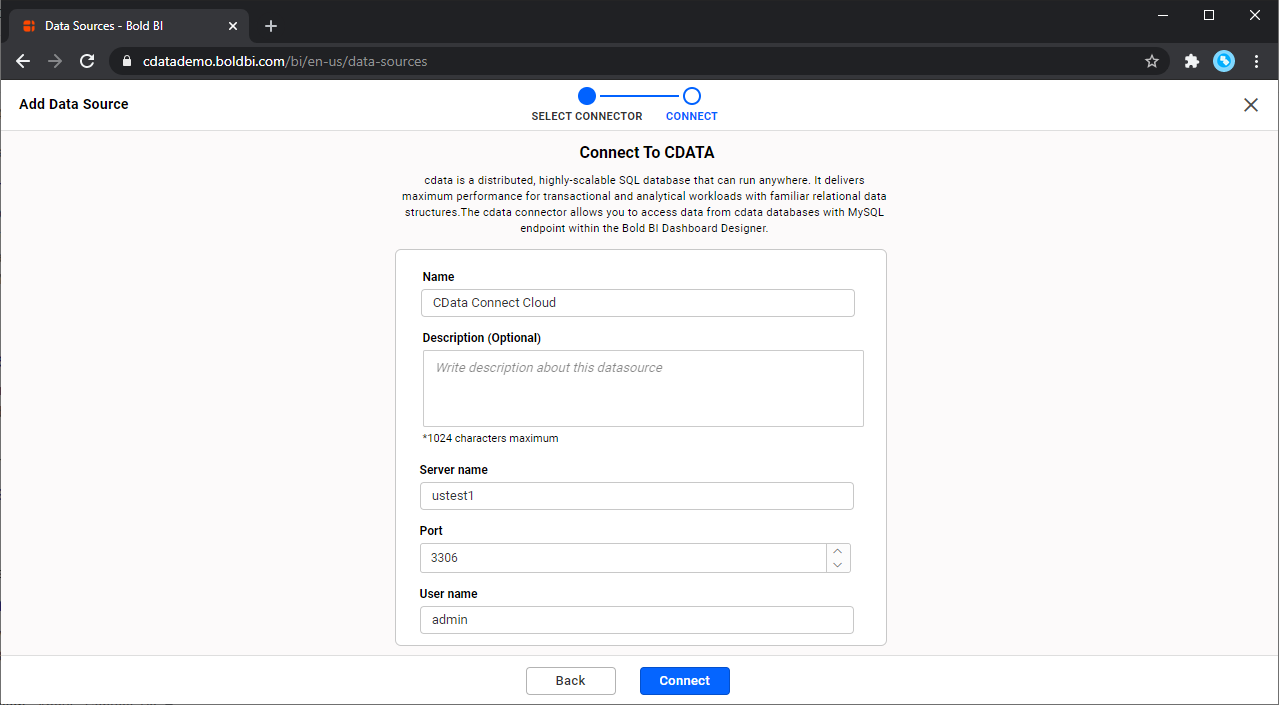
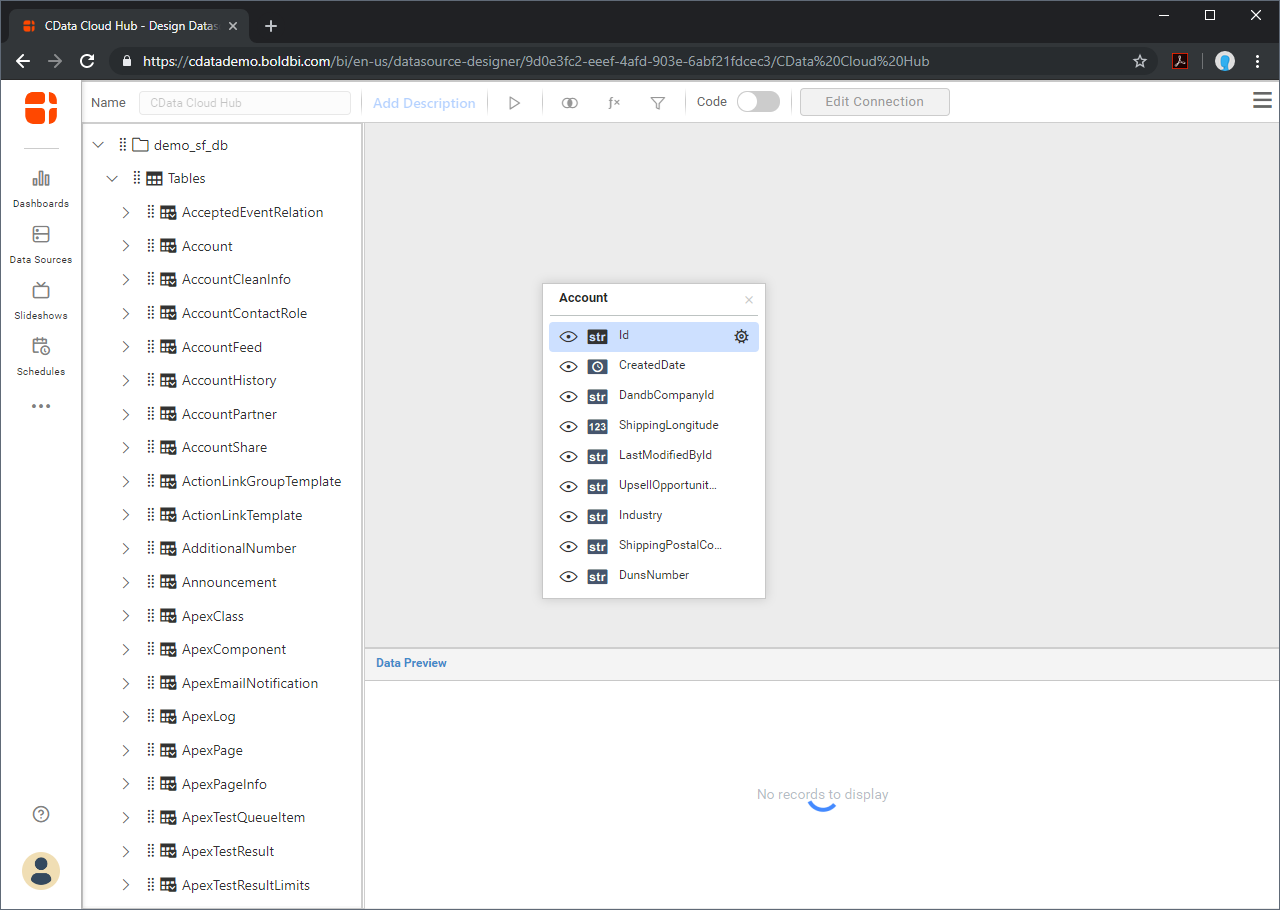
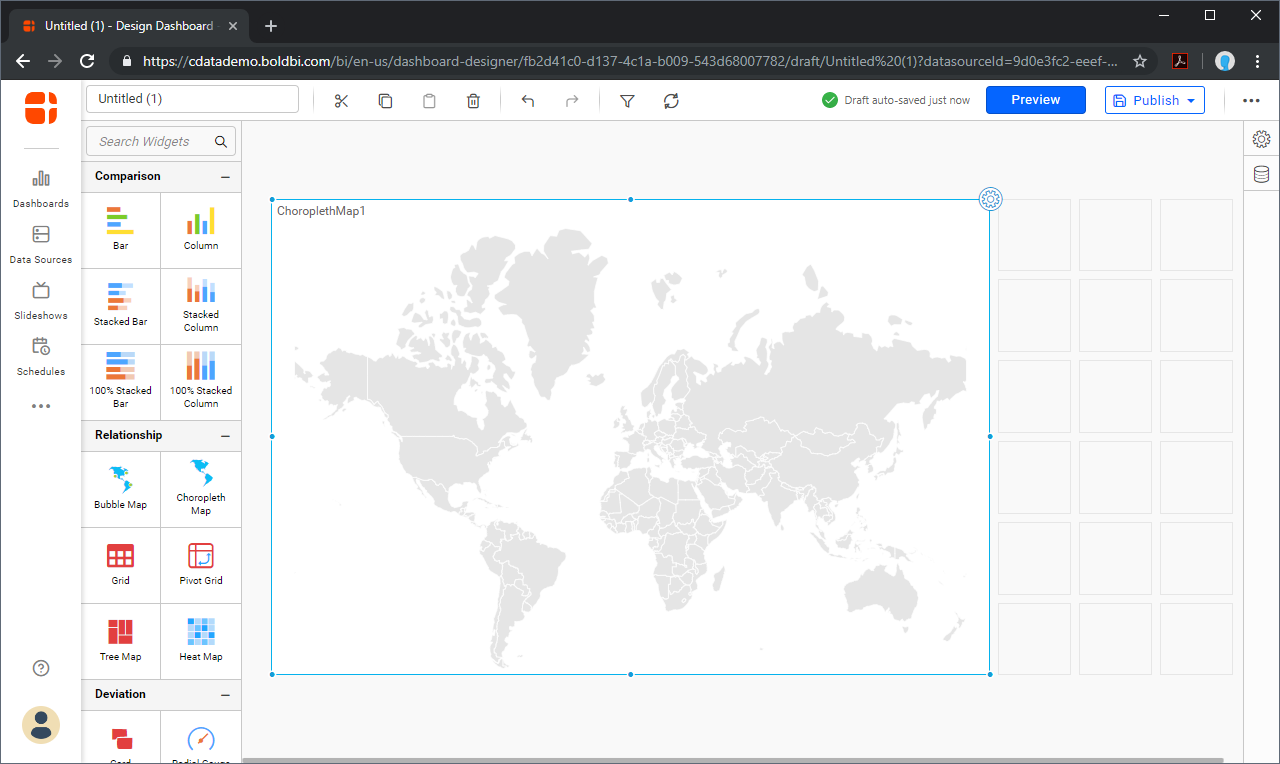
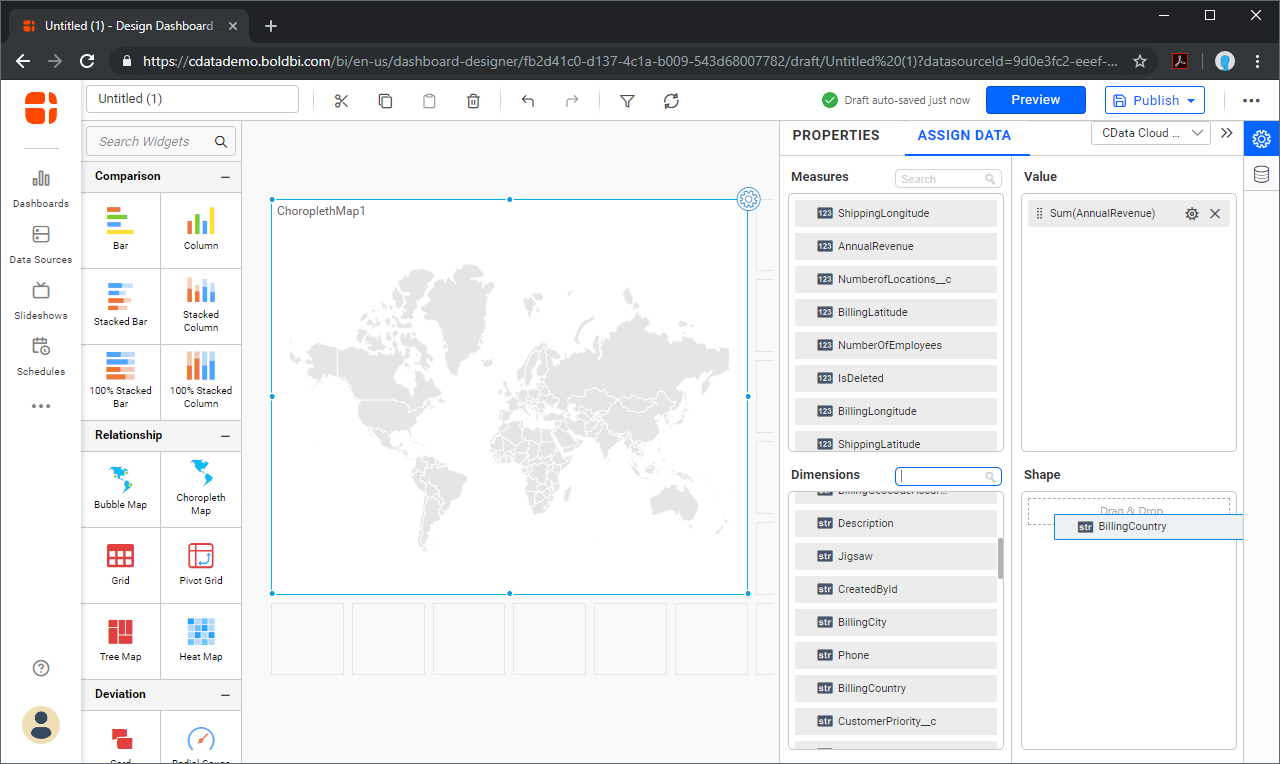
SQL Access to JotForm Data from Applications
Now you have a direct connection to live JotForm data from your Bold BI workbook. You can create more data sources and new visualizations, build reports, and more — all without replicating JotForm data.
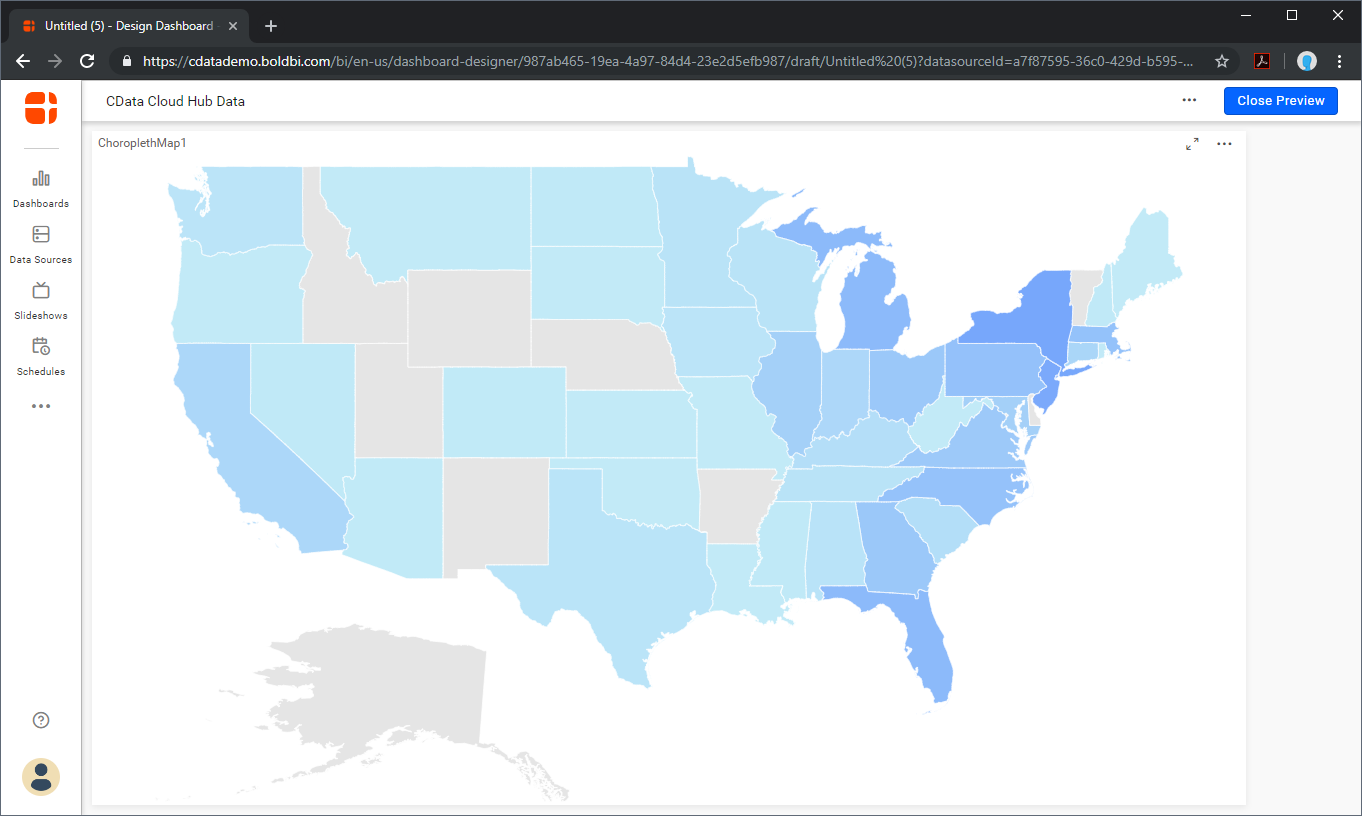
To get SQL data access to 200+ SaaS, Big Data, and NoSQL sources directly from your applications, see the CData Connect page.








